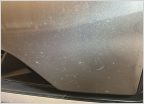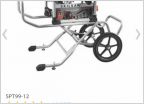-
Welcome to Tundras.com!
You are currently viewing as a guest! To get full-access, you need to register for a FREE account.
As a registered member, you’ll be able to:- Participate in all Tundra discussion topics
- Transfer over your build thread from a different forum to this one
- Communicate privately with other Tundra owners from around the world
- Post your own photos in our Members Gallery
- Access all special features of the site
Why do some countries drive on the left and others on the right?
Discussion in 'Off-Topic Discussion' started by csuviper, Mar 13, 2018.


 Reason 35913 to have a Dascham
Reason 35913 to have a Dascham Plantar Faciitis - What helps you guys?
Plantar Faciitis - What helps you guys? Birthday Present for Dad
Birthday Present for Dad Network switch question
Network switch question Secret Santa 2024: Wish List Thread!!!!
Secret Santa 2024: Wish List Thread!!!! Lets talk about Travel Trailer Batteries
Lets talk about Travel Trailer Batteries













































































